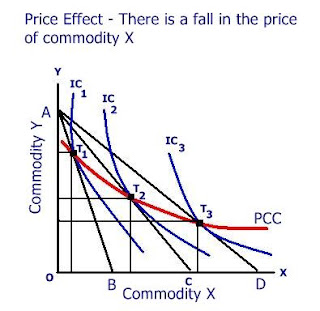More on Isocost
Home > The Production Process: The Behavior of... > Appendix: Isoquants and Isocosts > The Production Process: The Behavior of... Appendix: Isoquants and Isocosts Isoquants allow us to show all of the various combinations of capital and labor that can be used to produce a level of output. For example, in the table below, 50 units of output can be produced with 1 unit of capital and 8 units of labor, or with 8 units of capital and 1 unit of labor. The two resources can be substituted for each other. We can do a similar analysis for 100 and 150 units of output. Graphing the data, we have the following: While the figure above shows only three isoquants, there are many more (one for each possible level of output). The slope of an isoquant represents the rate at which labor can be substituted for capital (reading down the isoquant from left to right, the amount of capital is decreasing and the amount of labor is increasing). This is shown in the figure




